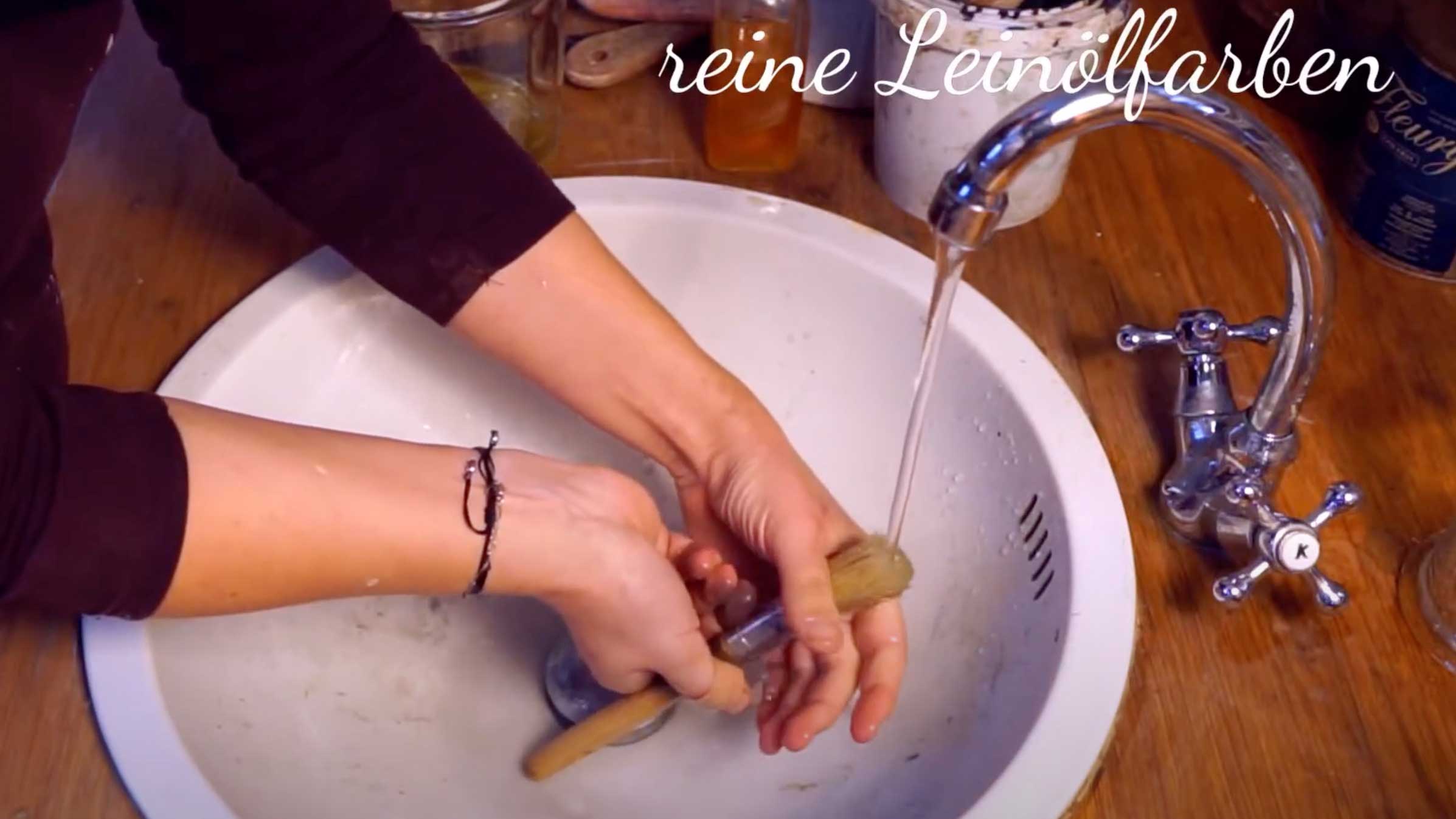Before washing your brush, you should always brush out any excess paint. Dip the brush into the soap and dip it a few times to spread the soap everywhere. Lather the soap thoroughly under warm water. I always do this in the palm of my hand. I keep working the soap into the brush bristles. Make sure you wash the paint out of the ferrule end as well. Here it quickly settles and causes the hair to become stiff and break.
Linseed oil soap is one of the moisturising soaps and we make use of this effect when cleaning the bristle brushes, which are made of natural hair. This way, the hair does not dry out and therefore does not break when brushing. Since linseed oil soap is clearly related to linseed oil, brushes that have been painted with linseed oil can be cleaned particularly well.
Turpentine substitute in particular puts a lot of strain on the bristle brush. And disposal is often a problem. With the linseed oil soap, which also cares for your hands, you have a very good and effective alternative. You can also use it to clean wooden surfaces, bathrooms, tiles, stones and even light rust can be removed with it.
Wash the brush until the soap foams cleanly and white. Even with white color, you will see the clear difference.
If you have dried out brushes, linseed oil soap can work wonders here too. Let the brushes sit in the pure linseed oil soap for a few days to allow them to take effect. With a lot of patience, even the worst brushes can be saved.
Finally, rinse the brush thoroughly with clean, warm water. Then knock the water out of the brush and leave it to dry.

